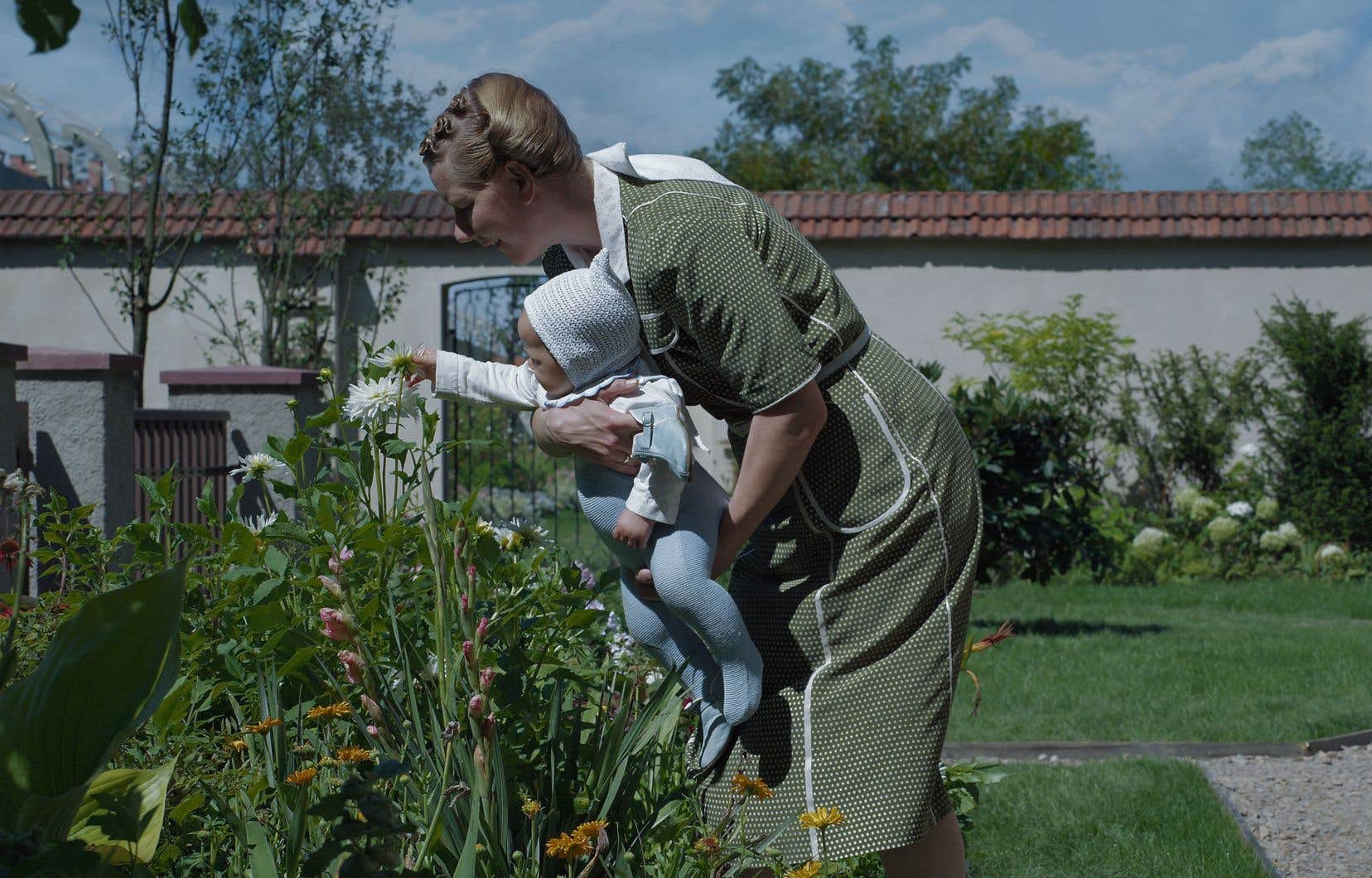We went, with friends, one Tuesday evening, after dinner, to a small local cinema with around forty seats to watch The area of interest, by Jonathan Glazer. This film, in many ways, is both disturbing and edifying. He denounces the horror of the Auschwitz camps and the Shoah without showing it. Through still shots and a sound atmosphere as elaborate as it is disconcerting, this film shows the daily life of the commander of Auschwitz, Rudolf Höss, and his family in their house which adjoins camp number 1 of Auschwitz. From the camp, we see nothing, but we hear the screams, the bursts of machine guns and see in the background the smoke emanating from the crematorium ovens suggesting the smell of burnt flesh stinking up the environment.
This film appeals to our senses in a subtle, yet grimly poetic, way. The atmosphere, the theme, the slowness, everything calls for us to immerse ourselves in the work. And yet, we were surprised by the unexpected appearance of the fourth audiovisual wall: among the twenty or so spectators who voluntarily braved the cold and gray of a wintery Tuesday evening, half kept drawing from buckets popcorn or plastic candy wrappers, creating a parallel and disconcerting sound and olfactory soundtrack.
We thus experienced a mirror effect that we did not expect: the banality of evil. This concept, coined by Hannah Arendt in 1963, following her coverage for The New Yorker of Eichmann’s trial in Jerusalem, was most controversial, both in the journalistic, political and philosophical spheres. Arrival in Israel to cover the trial of the “monster” just exfiltrated from Argentina, one of the greatest war criminals and central actor in the final solution aimed at the destruction of all the Jews of Europe (but also of Gypsies, homosexuals and all the minorities targeted by the Nazis), what was his disappointment to discover this Eichmann, dazzling, tough and litigious, declaring that he only followed the orders of his management, meticulously rationalizing rail traffic and estimating the cost-benefit advantages of Zyklon B for gas chambers.
In contact with him during the eight months of the trial, Arendt forged her concept of the banality of evil: Eichmann is only an ordinary executioner, a manager who only deploys his skills in accordance with the objectives set for him. And this is where we find this banality of evil: Eichmann is and perceives himself only as a zealous official who acts, without malice or reflection on the moral consequences of his actions, but with the sole aim of pleasing his leaders. . In short, a mediocre, a link in the chain, an ordinary performer in a hierarchical structure which reminds us of the man without qualities of R. Musil.
The banality of evil is therefore this (too) human aspect which consists of continuing one’s daily life, one’s habits and one’s routines without stopping to understand in which world they serve and fit. It is the pursuit of insane objectives by sensible means, it is the reflexive amorality of our activities as long as they are integrated into a comfortable and rational daily life and into the ethic of a job well done.
Let us return then to this fourth audiovisual wall in Glazer’s work. This film exposes the daily life of this ordinary, pushy, but “competent” commander and his equally ordinary wife, taking care of his household, his flowers and his children. The horror lies in this gap between these ordinary lives, which move without difficulty and without questioning in the least in an oppressive olfactory, sound and visual environment. This work aims to nauseate the spectators by the contrasts it denounces.
The sounds of chewed popcorn and crumpled wrappers mixed with screams of torture, the roar of tractor engines that we imagine moving hundreds of bodies, the barking of dogs that we imagine pursuing and slashing the recalcitrant Jews to orders, dissonant with the experience that, it seems, the director wishes to transmit to us.
It is very likely that these greedy spectators did not voluntarily break this fourth wall, both audiovisual and moral. But did they even notice? It seems not, since their gluttony did not stop during the 106 minutes of screening. They paid for their tickets to see a cinematographic work recognized for its good reviews and its nominations. They probably wanted to learn about a dark historical topic. They probably then wanted to discuss the horror of the camps, the aesthetic biases of the director, History and cinema.
These popcorn noises remind us that in this spectacle society, a cinematographic work is accompanied by treats, whatever its content. They evoke “routinized” everyday life, habitual behavior, harmless reflexes. They send us back to the paradigmatic invisibility (A. Honneth) of these human dramas which unfold before our eyes, which we see, but which we do not (or no longer) look at. This “popcorn symphony” brings us back to this banality of evil, diffuse, permanent, so human and so inhuman.
It is difficult to know whether Glazer’s intention was to have the fourth wall broken not by his actors, but by the audience. Was this dual experience (the aesthetic one of the film and the social one of the cinema) thought out and intended by the director? Either way, the result is a profound diachronic experience of the force of routines over the horrors of History.
Finally, perhaps this film should be felt, seen and heard as we experienced it: accompanied by voracious gluttons to better question this banality of evil, which (perhaps) is found on both sides of the screen?
